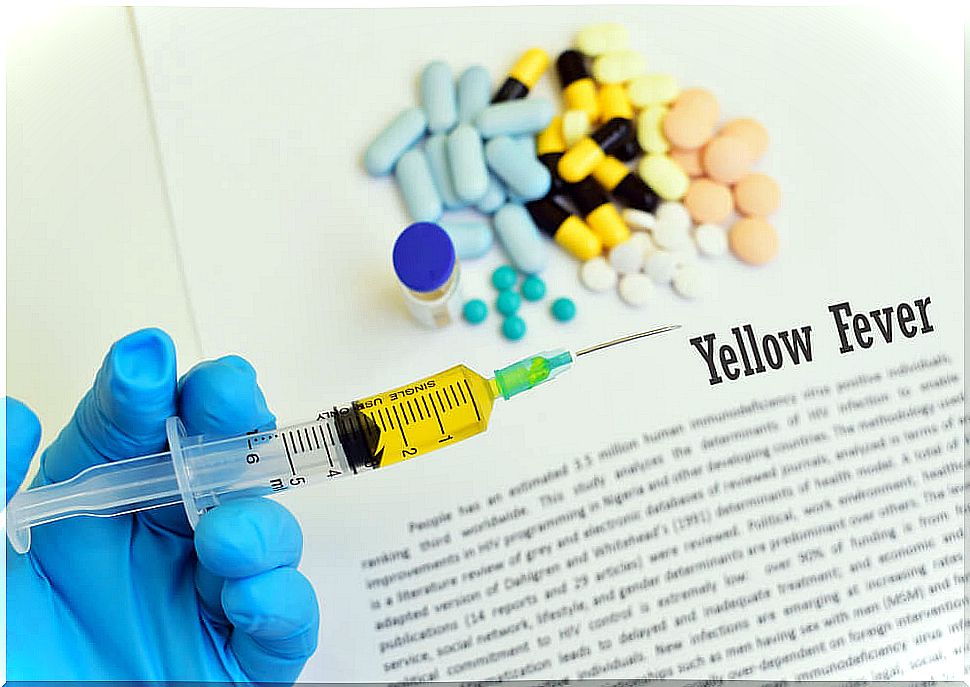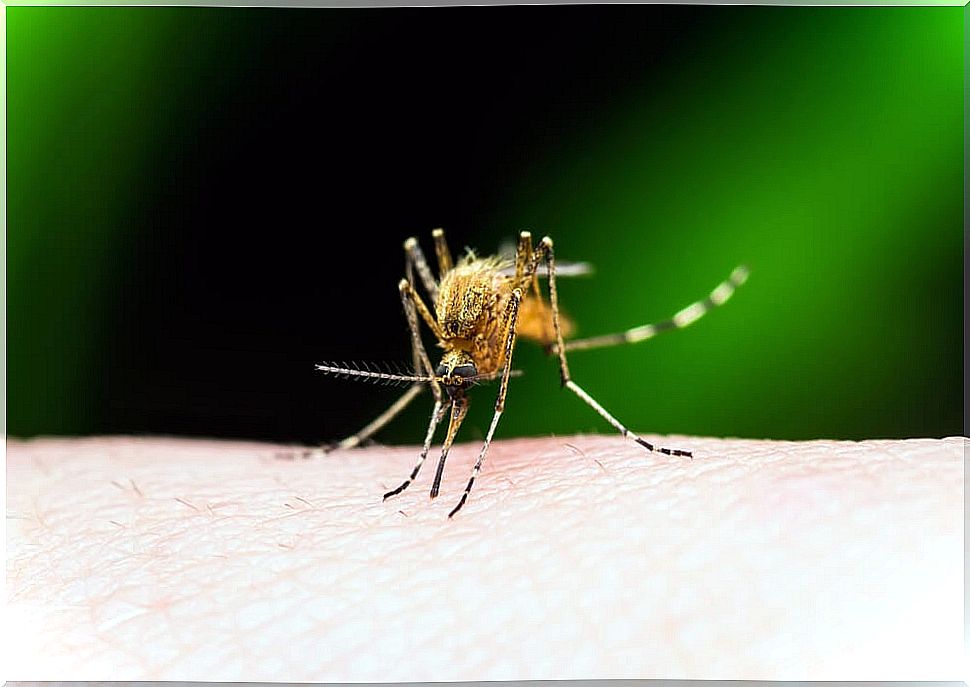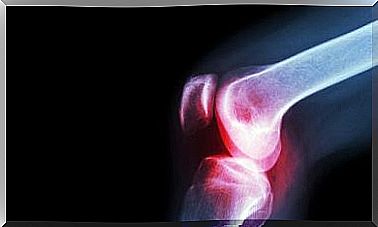What Is Yellow Fever And How Is It Transmitted?
The main preventive measure against yellow fever is vaccination. Up to 99% of those who get the vaccine are fully immunized against the virus.

Yellow fever is an acute, hemorrhagic, viral disease. It is called “yellow” because one of its symptoms is jaundice or yellowing of the skin, which some patients with this disease present.
Yellow fever is transmitted by a mosquito that carries the virus. This is endemic in the tropical areas of Africa and Central and South America. The main preventive measure against this disease is the vaccine.
Only a small percentage of patients infected with yellow fever have severe symptoms. Among these, half die between 7 and 10 days after contracting the disease. Therefore, it is a disease that can be fatal and against which all precautions must be taken.
What is yellow fever

Yellow fever is also known by the name of “black vomit disease” or “American plague.” According to the World Health Organization, about 200,000 cases of this disease occur annually. These give rise to approximately 30,000 deaths in the same period.
The first historical records of this disease date from the time of the Mayans. In this culture there was talk of a disease that affected monkeys and then humans, and that was characterized by the yellowish coloration of the skin, similar to jaundice.
The epidemics of yellow fever occur when three conditions are met. The first is that an infected person introduces the virus into densely populated areas. The second, that these areas have a high population of the transmitting mosquito. And the third, that the people in that area are not vaccinated for the most part.
Transmission
The yellow fever virus is an Arbovirus of the genus Flavivirus . Its transmission occurs through mosquitoes of the genera Aedes and Haemogogus. Some of these species live near houses, others in jungle areas and others in both habitats.
The yellow fever transmission mechanism is activated when a mosquito of the aforementioned species bites a sick patient. In this way, the mosquito is infected. Then that same mosquito bites another individual and then transmits the disease.
There are three cycles of yellow fever transmission. These are:
- Jungle. It is the type of transmission that basically occurs from one monkey to another. These cases take place in the jungle. It usually affects only a few humans, if they are in the area.
- Intermedia. In this case the yellow fever virus is transmitted from the monkey to man and from man to another man. This type of transmission is very common in small villages in Africa.
- Urbana. It occurs when the virus is transmitted from person to person, in large population concentrations. If individuals are not vaccinated, the potential for an epidemic is very high.
Symptoms of yellow fever

The symptoms of yellow fever are complex. After the mosquito bite there is an incubation period, which lasts between 3 and 6 days.
During this stage there are no symptoms. Then the patient enters a new stage, called the acute phase. During the acute phase, symptoms such as fever, headache, muscle aches, nausea and vomiting, dizziness, sensitivity to light, loss of appetite and redness of the face, eyes or tongue appear.
In some cases, the symptoms disappear after a few days. In other cases, the patient enters the toxic phase which is very dangerous. It is when jaundice or yellowing of the skin appears. There is also very strong vomiting, sometimes with blood.
There is also abdominal pain, bleeding, slow heart rate, liver and kidney failure, delusions, confusion, and sometimes coma. Up to half of the cases that enter the toxic phase end in death.
Prevention

The best form of prevention for yellow fever is the vaccine. This offers effective immunity in up to 99% of cases, provided it has been applied at least 30 days before contracting the virus. A single dose is able to prevent the disease for life.
Anyone traveling to areas with the potential for yellow fever should be vaccinated. Although progress has been made against the disease, it is still present in many regions of the world.
In any case, if the person is not vaccinated and contracts the virus, good hospital care is capable of reducing the risk of mortality. The important thing is to go to the health center as soon as the first symptoms are detected.









